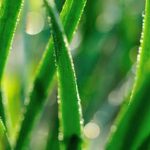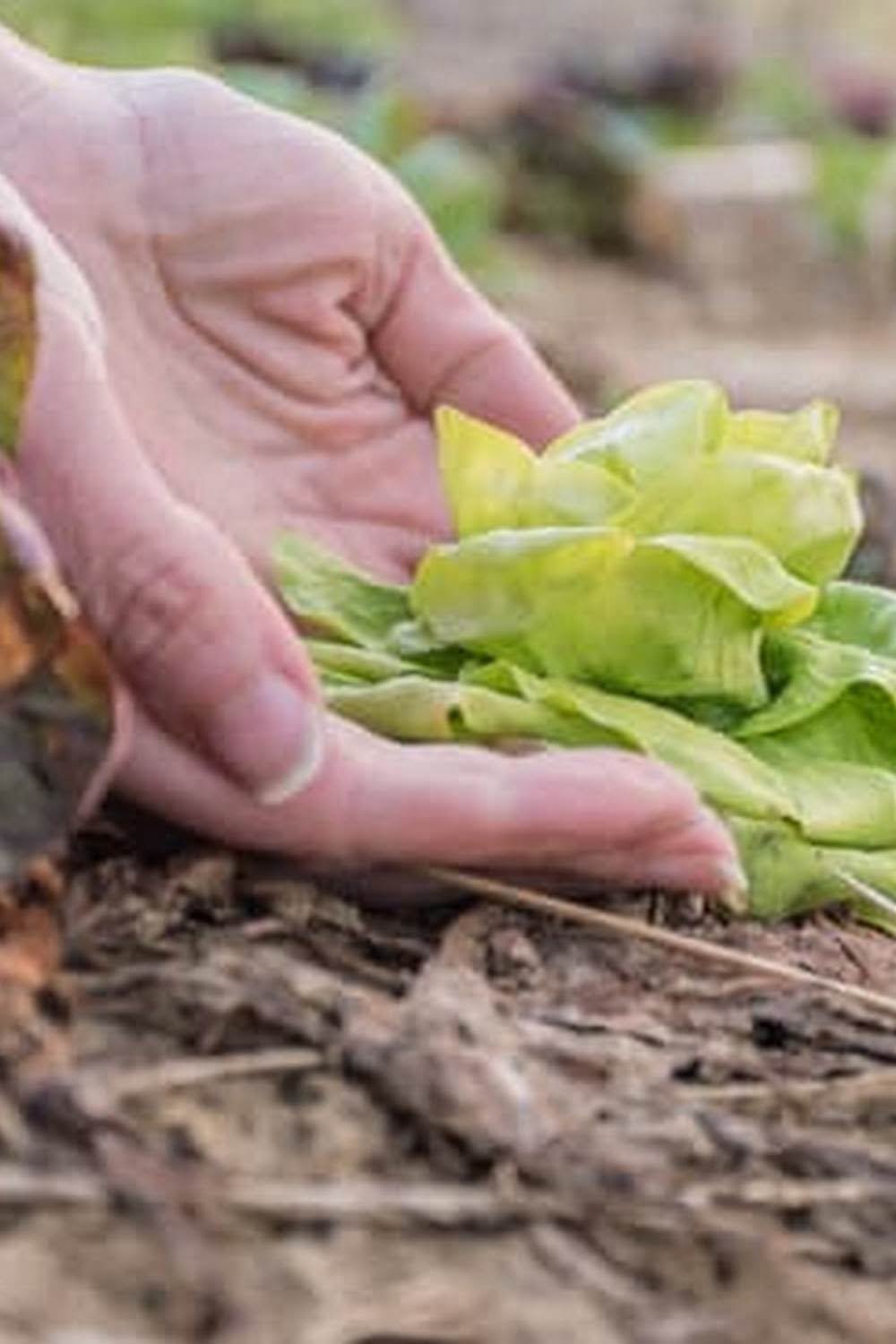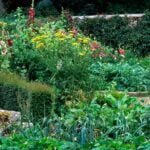How long does Sevin stay in the soil vegetable gardening? When it comes to pest management in vegetable gardening, many growers turn to chemical pesticides like Sevin.
Understanding the impact of these chemicals on the soil and the environment is crucial for sustainable and healthy gardening practices. In this article, we will delve into the use of Sevin in vegetable gardening, its chemical composition and properties, its effects on the soil, and how to minimize these impacts through proper application methods.
Sevin, also known as carbaryl, is a widely used insecticide that has been popular among gardeners for its effectiveness in controlling a variety of pests. It is commonly used in vegetable gardens to combat insects like beetles, caterpillars, and aphids that can cause significant damage to crops.
However, the prolonged presence of Sevin in the soil can have detrimental effects on soil health and overall ecosystem stability. By understanding how Sevin interacts with the soil and influences its long-term dynamics, gardeners can make informed decisions about its use.
In this article, we will explore the chemical composition and properties of Sevin to gain a deeper understanding of how it behaves in the soil. Additionally, we will discuss the factors that can influence the duration of Sevin in the soil, as well as alternative pest management strategies that minimize reliance on chemical pesticides. By considering these aspects, vegetable gardeners can make conscious choices that prioritize both plant health and environmental sustainability.
Understanding the Chemical Composition and Properties of Sevin
Sevin, also known as carbaryl, is a broad-spectrum insecticide that is commonly used in vegetable gardening to control a wide range of pests such as beetles, caterpillars, and aphids. It is available in various formulations including dusts, granules, and liquid concentrates, making it versatile for different gardening needs. Understanding the chemical composition and properties of Sevin is essential for gardeners to make informed decisions about its use and potential impact on the soil.
Chemical Composition
The active ingredient in Sevin is carbaryl, which belongs to the chemical class of carbamates. This compound works by disrupting the nervous system of insects, ultimately leading to their death. Its chemical composition allows it to be effective against a wide range of pests while posing minimal risk to mammals.
Properties
Sevin is known for its relatively low toxicity to humans and other mammals compared to some other chemical pesticides. It has a broad spectrum of activity, meaning it can target many different types of pests. Additionally, it degrades relatively quickly in sunlight and moisture, making it less persistent in the environment compared to some other pesticides.
Understanding the chemical composition and properties of Sevin provides insight into how it behaves in the soil and its potential impacts on soil health. As we delve into this topic, we can explore how Sevin interacts with soil components and what factors influence its duration in the soil over time. This knowledge can better equip gardeners to make informed choices about using Sevin in their vegetable gardens while minimizing any potential long-term effects on the soil ecosystem.
The Impact of Sevin on Soil and Its Long-Term Effects
Sevin, a widely-used insecticide in vegetable gardening, contains the chemical carbaryl as its active ingredient. When applied to the soil, Sevin can have both immediate and long-term effects on the soil and its ecosystem. The use of Sevin can impact the soil in several ways, including altering its chemical composition, affecting beneficial organisms, and potentially leaching into water sources.
The chemical composition of Sevin plays a significant role in its impact on the soil. Carbaryl is a broad-spectrum insecticide that targets a wide range of pests, but it can also affect non-target organisms such as earthworms, beneficial insects, and microorganisms present in the soil. This can disrupt the delicate balance of the soil ecosystem and lead to unintended consequences for plant health and overall soil fertility.
Factors such as temperature, moisture levels, microbial activity, and organic matter content can influence how long Sevin persists in the soil. In general, carbaryl has a moderate persistence in soil with a half-life ranging from several weeks to several months depending on these factors. Proper application techniques and understanding these factors are crucial to minimizing the long-term impact of Sevin on soil health.
- Properly measure and follow label instructions for applying Sevin
- Avoid over-application or prolonged use of Sevin
- Consider alternative pest control methods to reduce reliance on chemical pesticides
Understanding the duration of Sevin in the soil is essential for making informed choices about its use in vegetable gardening practices. By being aware of its potential impact on soil health and considering alternatives, gardeners can promote sustainable gardening practices while effectively managing pests.
Factors That Influence the Duration of Sevin in the Soil
Several factors can influence how long Sevin stays in the soil after being applied in vegetable gardening. One of the key factors is the type of soil. Sandy soil, for example, has larger particles and lower organic matter, which can result in Sevin leaching through the soil more quickly compared to clay soil.
Additionally, the pH level of the soil plays a significant role in determining the persistence of Sevin. In alkaline soils, Sevin tends to break down more rapidly than in acidic soils.
The environmental conditions also have an impact on how long Sevin remains in the soil. Temperature, moisture, and sunlight exposure can all affect the degradation of Sevin. Warmer temperatures and higher levels of moisture can accelerate the breakdown of Sevin, while prolonged exposure to sunlight can cause it to degrade more rapidly as well.
Furthermore, the application rate and frequency of Sevin use in vegetable gardening can influence its persistence in the soil. Over-application or frequent use of Sevin can lead to accumulation in the soil, prolonging its presence and potentially increasing its impact on soil health. Proper dosage and timing are essential to minimize the buildup of Sevin residues in the soil and reduce its long-term effects on garden ecosystems.
How to Properly Apply Sevin in Vegetable Gardening to Minimize Soil Impact
Sevin is a widely used chemical pesticide in vegetable gardening, known for its effectiveness in controlling a variety of common garden pests. However, it’s important to understand the potential impact of Sevin on the soil and take measures to minimize its long-term effects. Proper application of Sevin can help mitigate its impact on the soil while still effectively managing pests in the garden.
To minimize the impact of Sevin on the soil in vegetable gardening, consider the following tips:
- Follow label instructions: Always read and follow the manufacturer’s instructions for proper application of Sevin. This includes information on dosage, application methods, and safety precautions.
- Use targeted application: Rather than applying Sevin indiscriminately across the entire garden, use it selectively on plants that are actually being affected by pests. This reduces the overall amount of pesticide being introduced into the soil.
- Avoid overuse: Using excessive amounts of Sevin can lead to an accumulation of chemicals in the soil. Use only as much as necessary to address pest issues, and refrain from unnecessary or frequent applications.
In addition to these tips for minimizing soil impact when using Sevin in vegetable gardening, it’s also important to consider alternatives to chemical pesticides. Implementing integrated pest management (IPM) practices can help reduce reliance on chemical pesticides while still effectively managing pests in the garden.
Ultimately, being mindful of soil health and sustainability is crucial when using any chemical pesticides in vegetable gardening. By properly applying Sevin and considering alternative pest management strategies, gardeners can work towards maintaining a healthy and thriving garden environment for their fruits and vegetables.
Alternatives to Sevin for Vegetable Gardening
Neem Oil
One of the most popular alternatives to Sevin for vegetable gardening is neem oil. Neem oil is derived from the seeds of the neem tree and has been used for centuries as a natural pesticide. It works by disrupting the feeding and reproduction of pests, effectively controlling them without harming beneficial insects. Neem oil is not only environmentally friendly, but it also helps improve soil health by promoting microbial activity.
Diatomaceous Earth
Diatomaceous earth is another effective alternative to Sevin for vegetable gardening. It is made from the fossilized remains of tiny aquatic organisms called diatoms and works as a mechanical pesticide. When pests come into contact with diatomaceous earth, it absorbs the body fluids from the insect, ultimately leading to dehydration and death. This natural product can be used safely in vegetable gardens to control a wide range of pests without harming the soil or plants.
Insecticidal Soap
Insecticidal soaps are another option for managing pests in vegetable gardening without resorting to chemical pesticides like Sevin. These soaps are formulated to disrupt the outer cell membrane of insects, causing them to dehydrate and die. Insecticidal soaps are considered safe for use around humans, pets, and wildlife, making them a great alternative for maintaining a healthy and balanced ecosystem in your garden.
By considering these alternatives to Sevin for vegetable gardening, gardeners can make informed choices that promote soil health and sustainable practices while effectively managing pests in their gardens. These natural alternatives offer effective pest control without compromising the well-being of your garden ecosystem and can contribute to long-term garden sustainability.
Tips for Managing Pests in Vegetable Gardening Without Relying on Chemical Pesticides
The use of chemical pesticides in vegetable gardening has raised concerns about the potential impact on soil health and environmental sustainability. Fortunately, there are several alternative methods for managing pests without relying on chemical pesticides.
One effective approach is to promote biodiversity in the garden by planting a variety of crops that can naturally deter pests or attract beneficial insects. For example, marigolds can repel nematodes, while planting herbs like basil and cilantro can attract predatory insects that feed on garden pests.
Another tip for managing pests in vegetable gardening without the use of chemical pesticides is to employ physical barriers and traps. This can involve using row covers to protect plants from insect infestation or setting up barriers such as copper tape to deter slugs and snails. Additionally, handmade traps like beer traps for slugs or sticky traps for flying insects can help control pest populations without resorting to chemical sprays.
Furthermore, practicing good garden hygiene, such as removing diseased plants promptly and keeping the garden clean and tidy, can help prevent pest problems from escalating. Additionally, regular inspection of plants for signs of pest damage allows for early intervention, such as hand-picking pests off plants or using a strong stream of water to dislodge aphids and mites.
By implementing these alternative pest management strategies, gardeners can reduce their reliance on chemical pesticides while promoting a healthy and sustainable gardening environment.
| Alternative Pest Management Methods | Description |
|---|---|
| Biodiversity promotion | Planting a variety of crops that naturally deter pests or attract beneficial insects. |
| Physical barriers and traps | Using row covers, barriers like copper tape, or homemade traps to control pest populations. |
| Garden hygiene | Removing diseased plants promptly and regular inspection of plants for signs of pest damage. |
The Importance of Soil Health and Sustainable Gardening Practices
Sevin, a widely used chemical insecticide, has been a staple in vegetable gardening for decades due to its effectiveness in controlling pests. However, it is crucial for gardeners to consider the impact of Sevin on soil health and the environment. Understanding the chemical composition and properties of Sevin is essential in grasping its potential long-term effects on the soil.
Carbaryl, the active ingredient in Sevin, has been found to persist in soil for up to one year after application. This persistence can vary depending on factors such as soil type, climate conditions, and application rates. The impact of Sevin on soil includes potential harm to beneficial insects and microorganisms that contribute to a healthy ecosystem. Over time, this can lead to decreased soil fertility and overall garden productivity.
Proper application of Sevin in vegetable gardening is crucial for minimizing its impact on the soil. This includes following dosage instructions carefully, avoiding over-application, and adhering to safety guidelines. Additionally, exploring alternative pest control methods such as biological controls, crop rotation, and companion planting can help reduce reliance on chemical pesticides like Sevin while promoting a more sustainable approach to gardening.
| Impact Factor | Duration |
|---|---|
| Soil Type | Varying based on composition |
| Climate Conditions | Can influence degradation rate |
| Application Rates | Affects persistence in soil |
Conclusion
In conclusion, it is important for vegetable gardeners to understand the implications of using Sevin in their gardening practices. While Sevin can be effective in managing pests, its chemical composition and properties can have long-term effects on the soil. Factors such as soil type, environmental conditions, and application methods can influence the duration of Sevin in the soil, potentially impacting soil health and the overall sustainability of the garden.
To minimize the impact of Sevin on the soil, it is crucial for gardeners to properly apply this pesticide according to label instructions. This includes using the recommended dosage, avoiding overuse, and taking precautions to prevent runoff or leaching. Additionally, considering alternatives to Sevin for pest management in vegetable gardening can help reduce reliance on chemical pesticides and promote a more sustainable approach to gardening.
Ultimately, prioritizing soil health and implementing sustainable gardening practices is essential for maintaining a healthy and thriving garden. By understanding the implications of using Sevin and making informed choices about pest management, vegetable gardeners can contribute to a more environmentally friendly approach that supports the long-term health of their garden and surrounding ecosystem.
Frequently Asked Questions
Does Sevin Stay in the Soil?
Sevin, also known as carbaryl, does not stay in the soil for an extended period. It has a relatively short residual effect and tends to break down quickly when exposed to sunlight, water, and microbial action in the soil. This makes it an effective pesticide for controlling pests without causing long-term harm to the soil.
How Soon Can You Eat Vegetables After Using Sevin Dust?
The time frame for consuming vegetables after using Sevin dust can vary depending on the specific vegetable and the application rate of the pesticide. In general, it is advisable to wait a certain amount of time after applying Sevin dust before harvesting and consuming vegetables.
Always follow the instructions on the product label regarding re-entry intervals and harvest waiting periods to ensure food safety.
How Long Does Sevin Last on Plants?
The duration of Sevin’s effectiveness on plants can depend on various factors such as weather conditions, application method, and targeted pests. Generally, Sevin provides control of insects for about 7-14 days after application.
However, this can vary based on environmental factors and the particular pest species being targeted. It is important to monitor plants regularly and reapply as needed according to the product label instructions.

If you’re looking to get into vegetable gardening, or are just looking for some tips on how to make your current garden better, then you’ve come to the right place! My name is Ethel and I have been gardening for years. In this blog, I’m going to share with you some of my best tips on how to create a successful vegetable garden.





